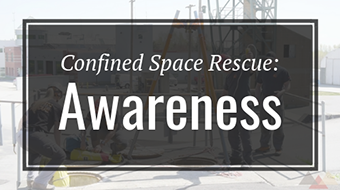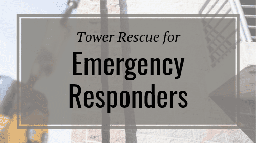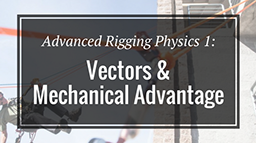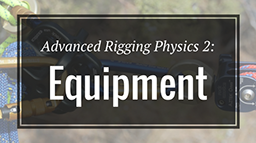Welcome to Confined Space Rescue Demonstration: Awareness
Please Note… This presentation is not a course. It is considered a demonstration.
As we’ve had conversations at scenario training or events like GRIMP Day or working with other professionals in the industry, we’ve come to the conclusion that there’s not a lot of information out there about confined space rescue for confined space rescuers.
Sure, there are a ton of courses out there for confined space principles — how to do hole watch, how to monitor, etc. — but just how relevant is this material to a confined space rescuer? When should we build a tripod reeve? What kind of precautions should we take around a patient when getting them out of a space? When do we decide to pull back, regroup, and call this a recovery?
Our local health and safety regulations, where we operate, have taught that most confined space incidents are due to the lack of one of three items:
- The lack of monitoring
- The lack of ventilation
- Or the lack of onsite rescue or expedient rescue
When we show up to rescue, we’re looking at a few items here that we’re going to have to fix, primarily monitoring and ventilation. If that’s what’s causing the problems, we’re going to have to fix them.
So that brought up the idea of filming this Confined Space Rescue Demonstration Series. When the idea first emerged, we thought we’d grab a bunch of ropes, play in some holes, swing around, and call it a day. But then we started realizing that we had to add in something about patient packaging and patient considerations, we can’t just do rescue rigging. As we broke those down, we realized that this was going to lead us to strategies and tactics in confined spaces as well.
This is a different type of rescue. You need to find people. You need to take other things into consideration. You need to know the hazards. And you definitely need to know if the ventilation is working.
Inside Confined Space Rescue Demonstration: Awareness, we’ve broken things down into atmosphere, strategies and tactics, rescue rigging, and patient considerations.
In the context of Confined Space Rescue, the Awareness level typically covers the foundational knowledge and skills that individuals need to recognize the existence of confined space hazards and understand the basic procedures for response. Here’s a general outline of what the Awareness section might include:
- Introduction to Confined Spaces:
- Definition of confined spaces.
- Identification of potential confined spaces in various settings.
- Hazard Identification:
- Understanding the various hazards associated with confined spaces, such as atmospheric, physical, and chemical hazards.
- Recognizing signs of hazardous conditions, such as lack of oxygen, toxic gases, flammable atmospheres, and more.
- Roles and Responsibilities:
- Overview of roles and responsibilities of personnel involved in confined space situations, including awareness-level responders, entry supervisors, entrants, and attendants.
- Regulations and Standards:
- Familiarity with relevant regulations and standards, such as OSHA (Occupational Safety and Health Administration) requirements and NFPA standards related to confined space entry and rescue.
- Communication:
- Importance of effective communication within the confined space team and with emergency responders.
- Basic use of communication equipment in confined spaces.
- Emergency Response Procedures:
- Basic understanding of the steps to take when encountering a confined space emergency, including when and how to call for professional rescue assistance.
- Importance of not attempting a rescue without proper training and equipment.
- Risk Assessment and Decision-Making:
- Basic techniques for assessing risks associated with confined spaces.
- Decision-making process for determining whether it’s safe to enter a confined space or wait for professional rescue.
- Personal Protective Equipment (PPE):
- Overview of the types of PPE required for confined space entry and rescue.
- Importance of using appropriate PPE to mitigate risks.
- Documentation and Reporting:
- Understanding the importance of documenting confined space entry activities and incidents.
- Proper reporting procedures after encountering hazardous conditions.
It’s important to note that the specifics of the Awareness level content can vary based on the standard being followed, such as NFPA 1006: Standard for Technical Rescuer Professional Qualifications, which might be relevant to confined space rescue. Always refer to the latest version of the NFPA standard for the most up-to-date and accurate information.





